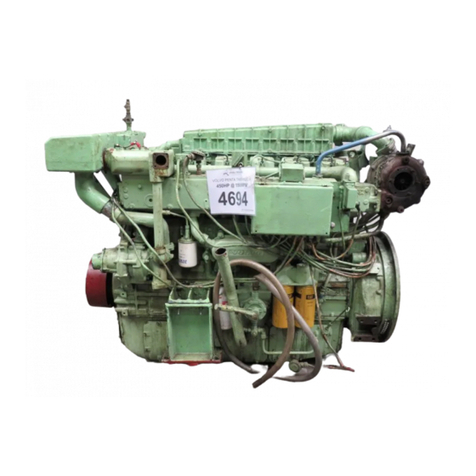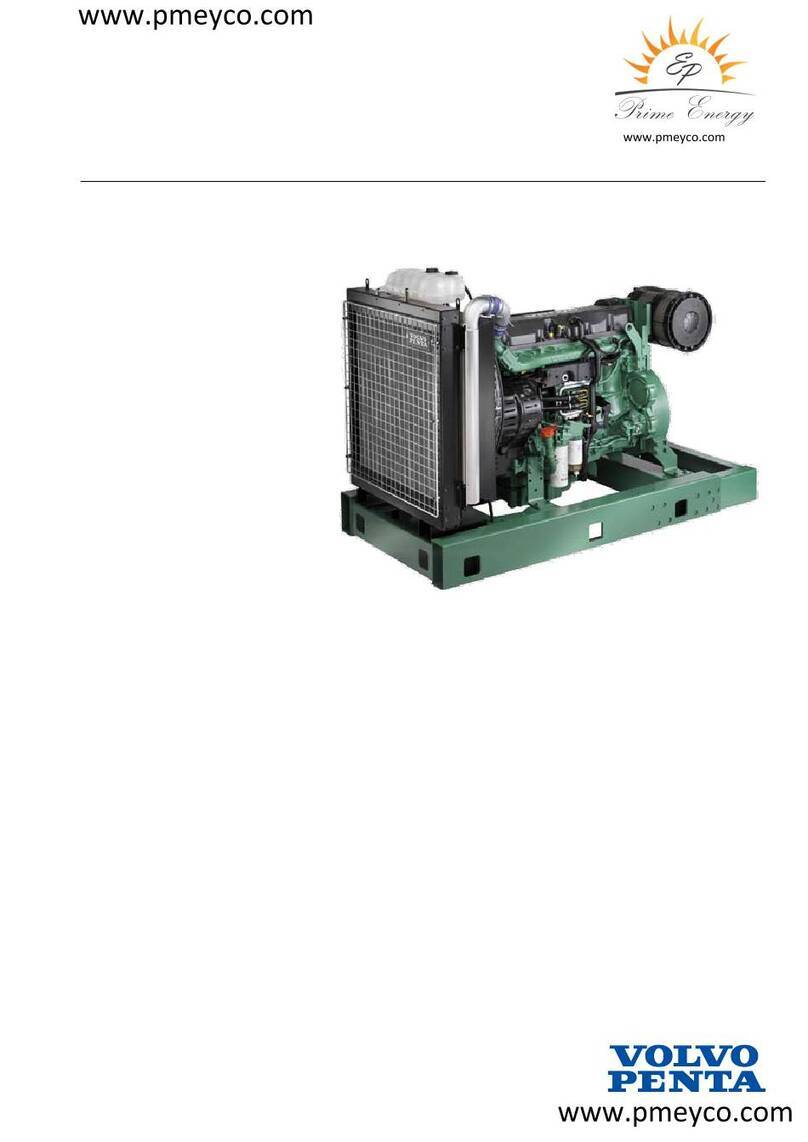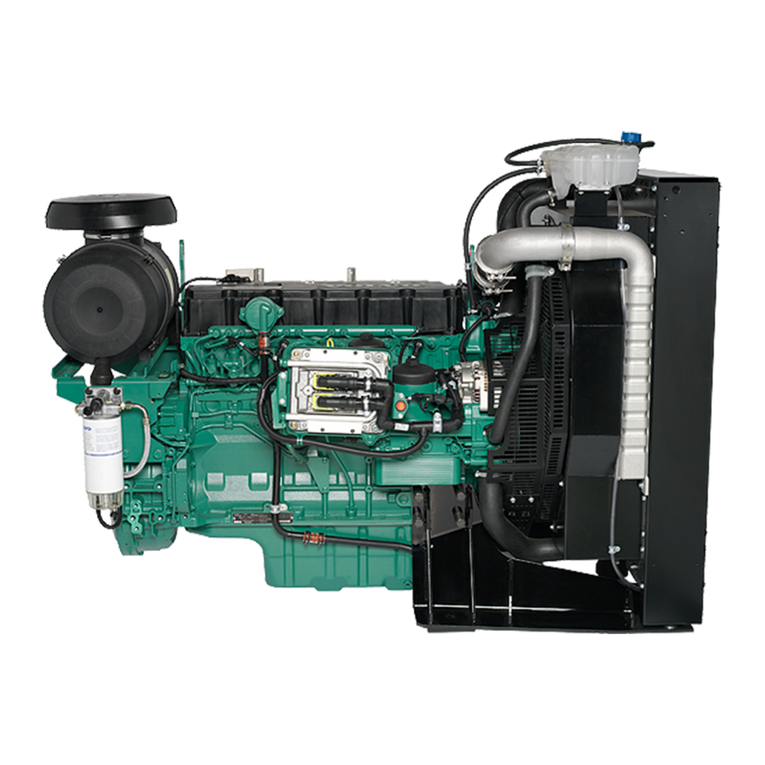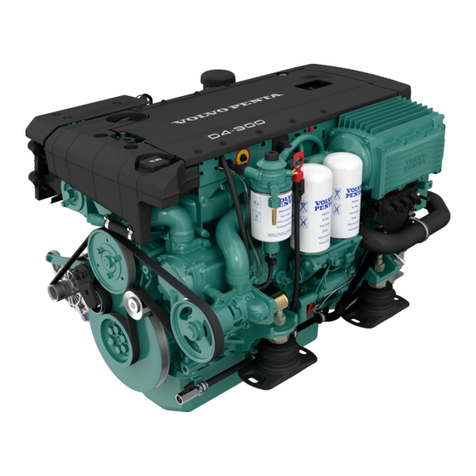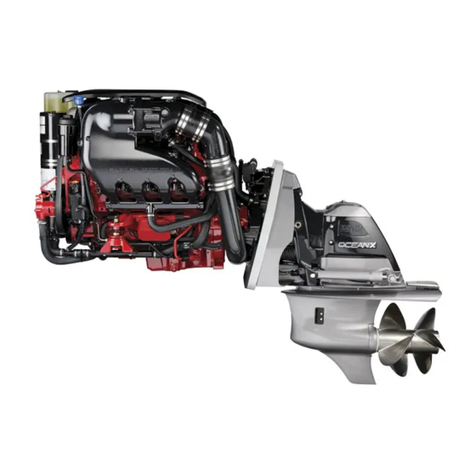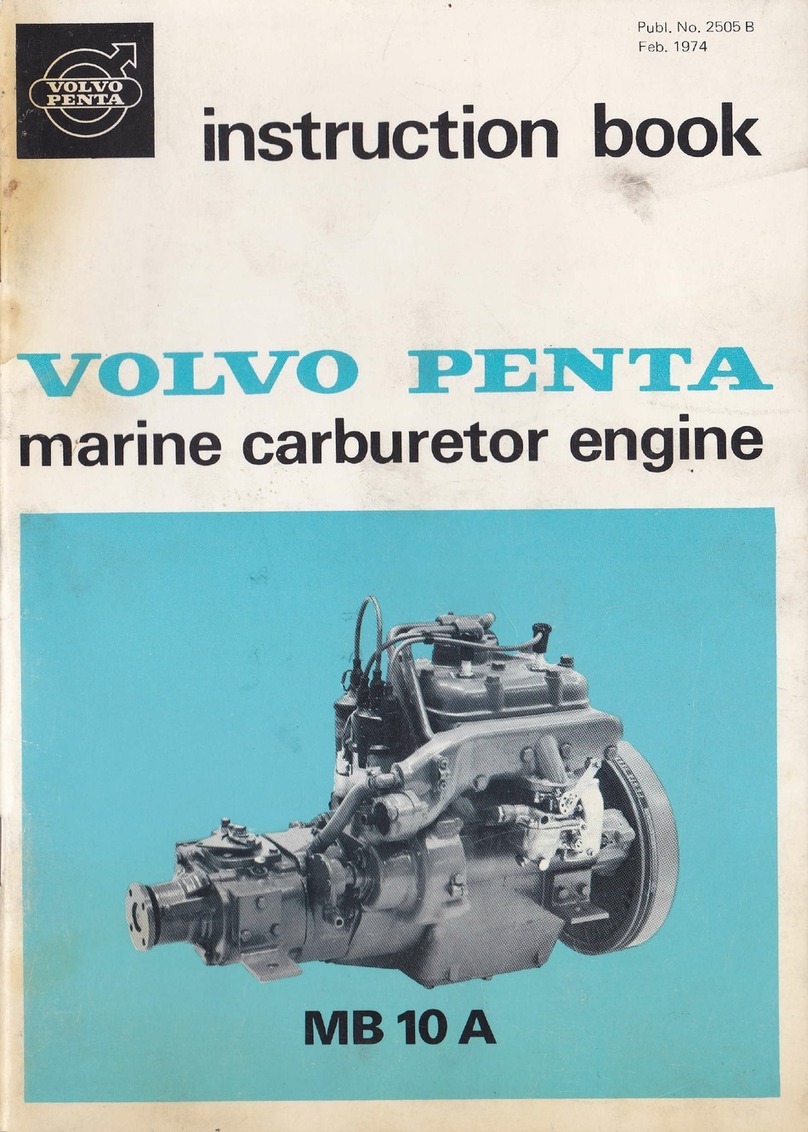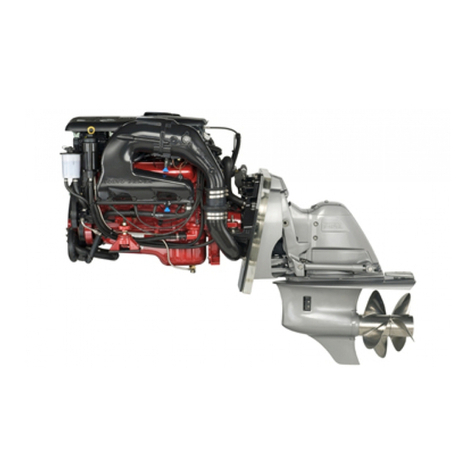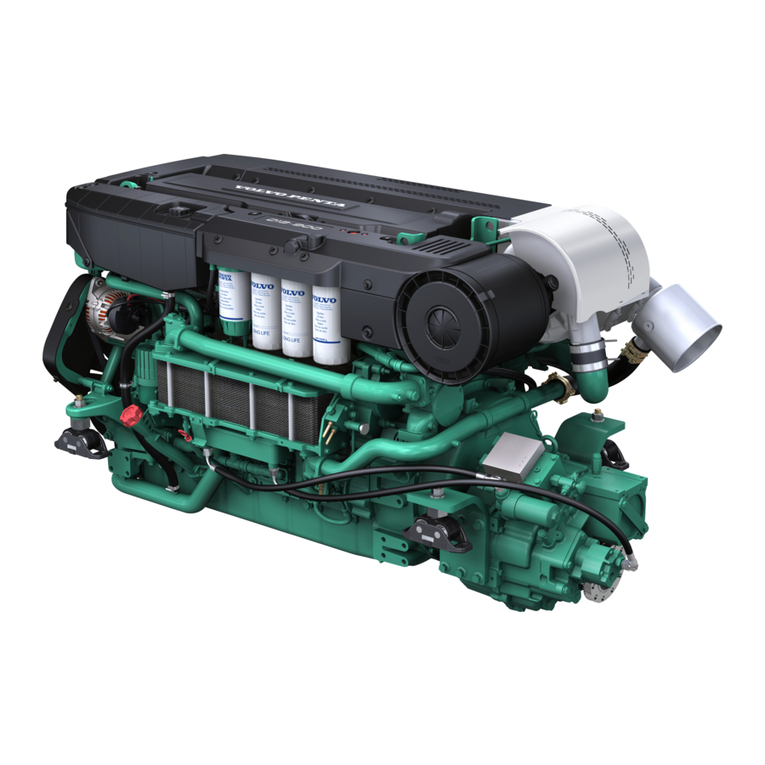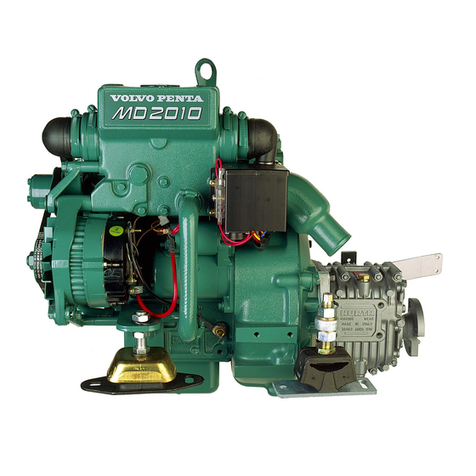
4
Safety precautions
If the boat is in the water, stop the engine and
close the sea cock before carrying out opera-
tions on the cooling system.
Only start the engine in an area that is well ven-
tilated. Beware, the exhaust gas is poisonous
to breathe in. When operating in an enclosed
space, use exhaust extraction to lead the ex-
haust and crankcase gases away from the work-
place.
Always wear protective goggles if there is a risk
of splinters, grinding sparks and splashes from
acid or other chemicals. Your eyes are extremely
sensitive and an injury to them can result in loss
of sight!
Avoid skin contact with oil! Long term or re-
peated skin contact with oil can lead to the loss
of natural oils from the skin. This leads to irrita-
tion, dry skin, eczema and other skin problems.
Old oil is more dangerous to your health than
new. Use protective gloves and avoid oil-soaked
clothes and rags. Wash regularly, especially
before meals. Use special skin creams to help
clean and to stop your skin drying out.
Most chemicals intended for the product (en-
gine and reverse gear oils, glycol, gasoline and
diesel), or chemicals intended for the workshop
(degreasing agent, paints and solvents) are
harmful to your health. Read the instructions on
the packaging carefully! Always follow protective
measures (using a protective mask, goggles,
gloves etc.). Make sure that other personnel are
not unknowingly exposed to harmful substances,
in the air that they breathe for example. Ensure
good ventilation. Dispose of used and excess
chemicals as directed.
Be extremely careful when tracing leaks in the
fuel system and when testing injectors. Wear
protective goggles. The jet from an injector is
under very high pressure and fuel can penetrate
deep into tissue, causing serious injury with a
risk of blood poisoning.
All fuels and many chemicals are ammable.
Keep away from naked ames or sparks. Gaso-
line, some solvents and hydrogen from batteries
in the correct proportions with air are very inam-
mable and explosive. Do not smoke! Maintain
good ventilation and take the necessary safety
measures before welding or grinding in the vicin-
ity. Always keep a re extinguisher accessible in
the workplace.
Store oil and fuel-soaked rags and old fuel and
oil lters properly. Oil-soaked rags can ignite
spontaneously in certain circumstances. Old fuel
and oil lters are environmentally harmful and
should be sent for destruction to a proper refuse
station for environmentally harmful material for
destruction.
Ensure that the battery compartment is designed
according to current safety standards. Never
allow an open ame or electric sparks near the
battery area. Never smoke near to the batter-
ies. The batteries give off hydrogen gas during
charging which when mixed with air can form
an explosive gas. This gas is easily ignited and
highly volatile. Incorrect connection of the bat-
tery can cause sparks sufcient to cause an
explosion with resulting damage. Do not shift the
connections when attempting to start the engine
(spark risk) and do not lean over any of the bat-
teries.
Always ensure that the Plus (positive) and Minus
(negative) battery leads are correctly installed on
the corresponding terminal posts on the battery.
Incorrect installation can result in serious dam-
age to the electrical equipment. Refer to the wir-
ing diagrams.
Always use protective goggles when charging
and handling the batteries. The battery electro-
lyte contains extremely corrosive sulphuric acid.
If this should come in contact with the skin, im-
mediately wash with soap and plenty of water.
If battery acid comes in contact with the eyes,
ush immediately with water and obtain medical
assistance.
Turn the engine off and turn off the power at the
main switches (breakers) before carrying out
work on the electrical system.



